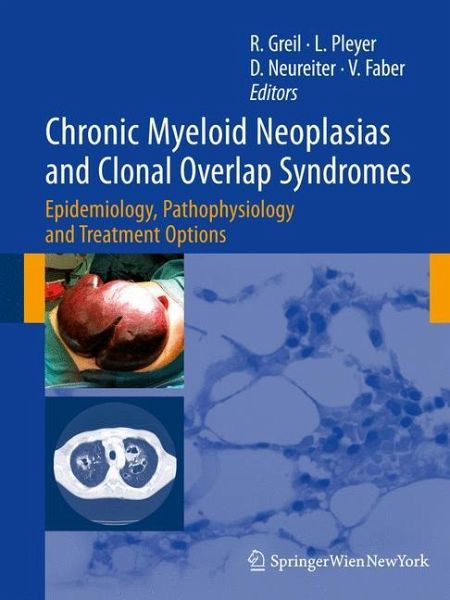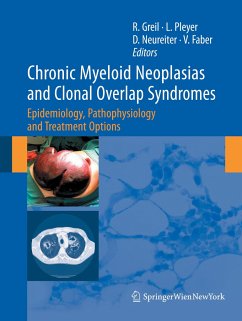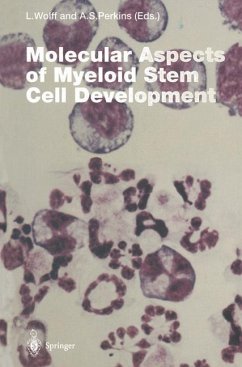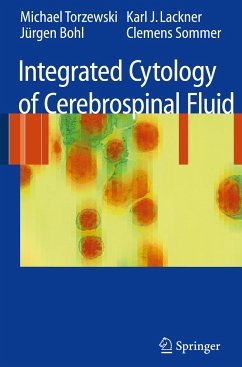
Chronic Myeloid Neoplasias and Clonal Overlap Syndromes
Epidemiology, Pathophysiology and Treatment Options
Herausgeber: Greil, Richard; Neureiter, Daniel; Pleyer, Lisa
Versandkostenfrei!
Versandfertig in 1-2 Wochen
149,99 €
inkl. MwSt.
Weitere Ausgaben:

PAYBACK Punkte
75 °P sammeln!
This book comprises an in-depth view on the current knowledge of chronic clonal myeloid diseases. Special emphasis is laid on chronic myeloid leukaemia and 'classic' myeloproliferative disorders (essential thrombocythemia, polycythemia vera, chronic idiopathic myelofibrosis) as well as myelodysplastic syndromes, oligoblastic leukemias, paroxysmal nocturnal hemoglobinuria and overlap diseases. Both young physicians in hematological training as well as practicing hematologists are addressed, with the aim of imparting a clear understanding of these disorders. In-depth information on the most relevant cell-biological pathways is accentuated by graphics. Guidelines for diagnosis, complemented by cytological, histological and clinical photos, as well as easy-to-follow algorithms with clinical as well as laboratory findings are provided. Current management of routine as well as precarious clinical situations are discussed and supplemented with boxes highlighting the most relevant information in keywords.
Introduction The understanding of the genetic, epigenetic, immuno- well as for practicing hematologists or oncologists. logical and biological causes of myeloproliferative dis- Each chapter follows a similar architecture and leads orders has substantially improved in the last few years. through epidemiology, genetic and molecular causes, Together with refined tools in pathology, the successful hematological and clinical findings, prognostic factors establishment of mouse models mimicking at least some and current treatment approaches of the diseases. of the myeloproliferative disorders, and murine models Effort has been made to point out the evolving field of novel drugs in this arena but simultaneously diff- allowing to carefully dissect the role of mutations and gene dosage effects of, for example JAK2, this has led to entiate between standard and experimental treatment ever increasing numbers of modified classification approaches. schemes. It is therefore important for the heamtologist Together with the co-editors and all the authors of or oncologist to keep up with this rapid change in classi- the various chapters I hope that the readers of the book fication language, the upcoming of new entities or differ- will enjoy reading and benefit from the information entiation between, or subclassification of, rare diseases provided.












